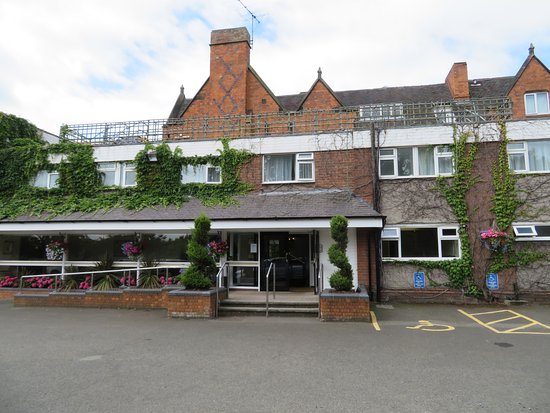
Mollington Hall was the centre of an extensive estate for the Feilden family and had continued as such for Gibbons Frost, a Chester flour miller. With no male heir to the Frosts, the estate was broken up by 1930, and in 1938 the Hall was demolished by an Ellesmere Port builder, Cullin. His plans for house building on the site ran into financial difficulties and were only implemented much later. Interesting features of the estate which have survived include the north and south lodges, and two artificially created lakes. There is also a remarkable brick lined icehouse, ovoid in shape, of which two thirds is below ground, with the top covered by soil and shrubs. Double doors at ground level allowed blocks of ice, cut from the lake in hard weather, to be packed with snow and used at the Hall for wine cooling etc.
During the war the icehouse was used by the home guard to store ammunition. Surviving the loss of the Hall were its surrounding farms and a nucleus of original properties like the C of E School opened in 1896, and the Post Office. In the days when Mollington Hall was the centre of a busy estate, it would no doubt have seen great social activity. As far as the village was concerned that would have meant annual displays and fetes in the park for adults, and parties for children. The Hall might, therefore, have been sadly missed, except that others were ready to step in: of whom the best remembered is Mrs Nicholson of The Willows. Local residents remember her magnificent gardens and grounds with ripe peaches growing on the wall and tropical plants in the greenhouses. In fact, the 1920s marked the end of the period when leadership in the parish was being provided by the landlords and owners of the great houses.

Crabwall Manor appears to have existed in one form or another since about 1066. It was owned by a succession of mayors of Chester until the 1530's when the Gamull family acquired it only selling it on in 1864. In the early 1900's the hall was occupied by the Davies family. During both World Wars, the hall was used as a hospital for female personnel.
It was constructed as a house in the 18th century. It had the facade added and was remodelled in the early 19th century. The windows were added in the early 1900's. It was made a Grade II listed building on 1st June 1967. It is now a hotel called Crabwall Manor Hotel and has an integrated gym with a swimming pool.
This was originally built as a manor house in about 1853. The hotel takes its name from the local village name and that of Robert de Banastre, who acquired the estate in the 12th century. The old manor house on the site was replaced by the present building in 1853. Converted first of all into a country club, it became a hotel in 1964.It was purchased by Brook Hotels in 2006.


Little Mollington Hall (now known as Mollington Grange, is a Grade II listed building. It was originally constructed sometime in the 16th/17th centuries, but was largely rebuilt in the 17th/early 18th century with later 18th and 19th century alterations. It was originally a farmhouse.
created with
Joomla Page Builder .
